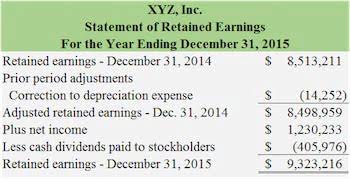AI in Accounting Examples & Benefits of AI in Accounting
With two master’s degrees spanning both areas, one in finance and a recent one in data science with a specialization in artificial intelligence, I’m more inclined to embrace this brave new frontier than lament the AI-pocalypse. Depending on who you ask, the prediction of “fully automated accounting” is a long-awaited godsend or a terrifying omen of doom. But with each leap in AI, we move closer to a more symbiotic relationship between humans and machines—one that will inexorably change the lives of accountants, bookkeepers and their clients.
- As AI technology continues to advance, the industry must adapt, evolve and stay vigilant to ensure that AI is leveraged effectively and ethically.
- As an observer and a participant in this transformation, I am deeply intrigued by how AI is revolutionizing these industries and creating a win-win scenario for professionals and their clients.
- Blue Dot is an AI tax compliance platform that uses patented technology to help businesses ensure tax compliance.
- The tool also offers easy integrations for popular software like G-Suite, Quickbooks Online, and Zapier.
For example, Patriot Software’s Smart Suggestion streamlines the process of categorizing transactions during bank imports. The machine learning feature makes account categorization suggestions based on the same or similar transactions other users have had. Computer vision, a type of AI, can be used to count cars in retail parking lots like Walmart to help generate revenue forecasts for financial planning models. ChatGPT capabilities can improve the formatting of forecasts to align with your specifications. But it’s best to use AI-driven financial forecasting software for efficiency. Clients can immediately access answers and assistance through AI-powered chatbots and automated communication channels, enhancing their overall experience.
Why I’m Starting a Blog!
To make this decision, you need to understand what your practice needs to hit its business goals. Once you know that, it becomes easier to select the software that will help you achieve those goals. The platform puts everything your employees need to thrive in a single place, making it easier for them to collaborate and deliver work for clients on time and within budget.
AI, as it is today, is a complementary technology tool that might belong in your tech stack, as AI can replace, enhance or automate specific tasks. To make the most of any new technology, however, you need to understand how it fits into your business, so let’s take a closer look at each of these use cases. AI can help you prepare and file tax returns more accurately by analyzing your business’s financial data and applying tax regulations. This will allow you to claim tax credits and deductions you might not have been aware your business is eligible for. AI identifies relationships between variables that humans may not be able to detect, enabling more accurate financial forecasting.
Benefits of Artificial Intelligence
Capitalizing on GenAI’s remarkable capabilities requires human oversight to manage privacy, security, legal, and behavioral risks. GenAI’s large language models (LLMs) synthesize so much data so quickly that it can be challenging to track its sources, making it difficult for humans to understand the validity of information it produces. Browse all our upcoming and on-demand webcasts and virtual events hosted by leading tax, financial reports audit, and accounting experts. The dynamics of the human-AI partnership in accounting are all about harnessing AI’s benefits while upholding ethical standards and leveraging the irreplaceable human expertise. Use Zeni to automate the time-consuming daily expense tracking and bookkeeping procedures. ClickUp has over 1,000 ready-made integrations with other tools to keep everything in one convenient, customizable Dashboard.
Senta vs. AccountancyManager: Which is better for practice management?
According to technical interviewing company Karat’s 2023 Tech Hiring Trends report, 62% of software and talent leaders say that software engineers are more valuable than capital. Meanwhile, 55% of respondents believe software engineers are worth at least three times their total compensation, up from 45% in 2022. For example, maybe you already have a good process for document management, but you know your company’s workflow could use some improvement. In that case, you could pay specifically for Canopy’s workflow optimization module without also purchasing its document management features. Becoming a CMA is an opportunity for accounting professionals to embrace change and sit at the head of the ship, so to speak, as it charts new waters.
Choose the Right AI Tool for Your Needs
This trifecta is a revolutionary alliance, propelling organizations into a future of agile improvements. The Wheel of Work for HR emerges as a valuable framework in this journey, offering a structured approach for coaches to help HR professionals navigate the multifaceted challenges of an AI-driven future workforce. But its Practice Manager tool is specifically meant to help firms streamline workflows and boost efficiency. Financial Cents is another accounting practice management software that could make sense for your company’s goals.
Enhanced Data Analysis and Predictions
The net result of new technology in accounting and bookkeeping has been that accounts and tellers performed higher-skilled work than before. The salient question is how AI is changing accounting, how AI innovation can change accounting jobs, and what accountants need to do to thrive during this digital revolution. I’m an entrepreneurial CPA that founded Xen Accounting, a
100% cloud-based accounting firm, in 2013. Following its acquisition in 2018,
I started Future Firm to help accountants fast-track the growth of a modern, scalable accounting firm of their own.
Accounting firms and accounting departments are having a myriad of reactions to AI and similar advances in tech. My overarching advice is that you accept the inevitability of some major changes in our industry over the next decade. As an accounting professional, it’s your responsibility to stay on top of trends and to understand how new technological innovations like ChatGPT could impact your career.




Commentaires récents